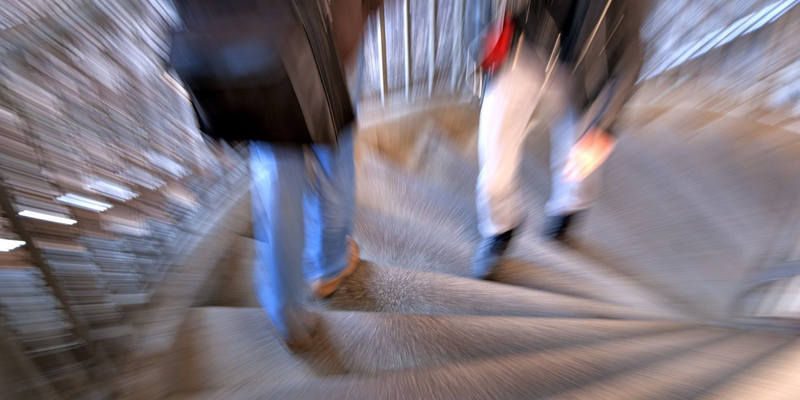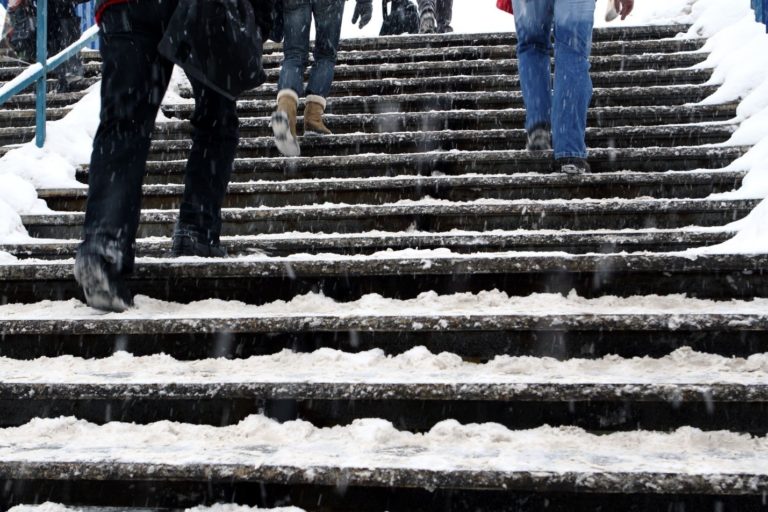
The term “slip and fall” may conjure up the image of slick tiles and yellow “Wet Floor” signs in retail store aisles. But puddles in grocery store aisles aren’t the only premise liability hazards waiting to trip up unsuspecting victims.
According to the National Safety Council, over 1 million people are injured from stair falls every year. These falls can result in serious injury or even death. Sometimes, property owners can be held liable for these accidents just like other slip and fall mishaps.
The hazards present on staircases, however, are different in a number of ways from traditional premise liability cases. Because of this, the unique aspects of stair injury cases are worth special consideration.
If you or a love one has been injured in a stair accident, here are some ways to determine if you have grounds for a personal injury suit.
Things to Look for after Stair Accidents

If you were injured from a fall on someone else’s property, the property owner may be held accountable. To prove fault, one of the following must be true:
- The owner or their employee was responsible for the hazard on the premise—whether it was a wet spot from a spill, a tear in the carpet, or other dangerous condition that caused the fall
- The owner or employees were aware of the hazard, but failed to do anything about it
- The owner or an employee should have known about the dangerous condition, because a reasonably responsible person would have discovered the hazard and addressed it accordingly.
These are all elements you would find in a normal slip and fall case. A more in-depth guide to liability in slip and fall cases can be read here.
In general, staircases are more dangerous than the surface of a floor. Furthermore, some defects that lead to injury aren’t always apparent. You may have to investigate into the construction and maintenance of the stairs in order to locate the hazard.
Worn Down Surfaces. The “run” of the stair refers to the part you put your foot on. Over time, this part of the stair can get worn down—whether it’s made of carpet or wood. If the owner has been negligent about maintaining the stairs, the worn down run can become slippery and cause accidents.
Wet or Icy Surfaces. Though you have a personal responsibility when using outdoor stairs in bad weather, if the owner’s lack of maintenance caused an excessive build-up of ice, water, or other hazardous conditions, he or she may be liable for any injuries that result.
Building Codes. There a number of state and municipal building codes that all property owners must abide by. Failing to follow these rules can create a hazardous environment for other people, and often opens up owners to premise liability.
The building codes are too numerous and varied to go into at length, but here are some of the more common ones:
- Many building codes require handrails to be present on staircases, as well as regulating the height and width of the rail. If you believe a handrail (or lack of one) contributed to your accident, it is worth looking up your county municipal codes to see if the owner violated local building regulations.
- Improper stair height or depth. Building codes also regulate the dimensions of the steps—if a step is too high or too low (or too wide or narrow) this is evidence of a liability.
- Uneven stair height or depth. Codes also dictate the distances between different steps’ dimensions. If one step is significantly wider or taller than another, this can cause an individual to miscalculate a step, lose their balance and fall.
If you or a loved one has been injured in a stair accident, you may be entitled to compensation. Don’t pay for someone else’s mistake. Get your life back on track by reaching out to an experienced Florida personal injury lawyer as soon as possible.